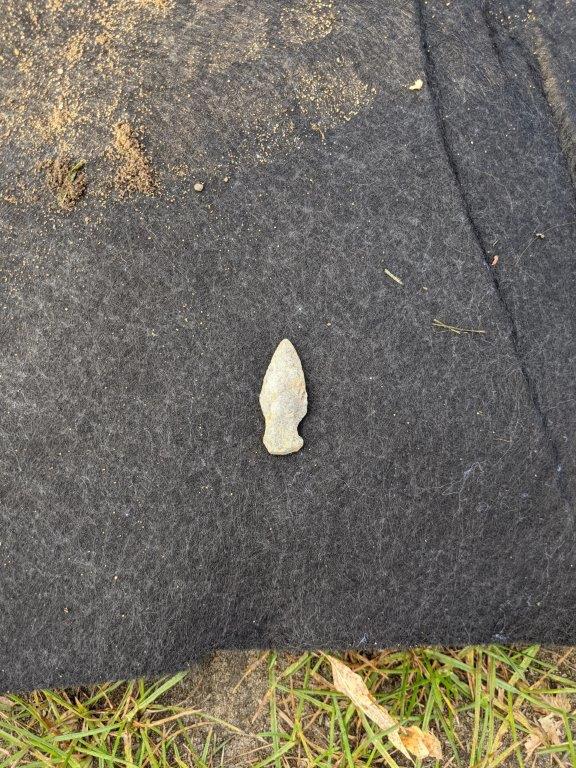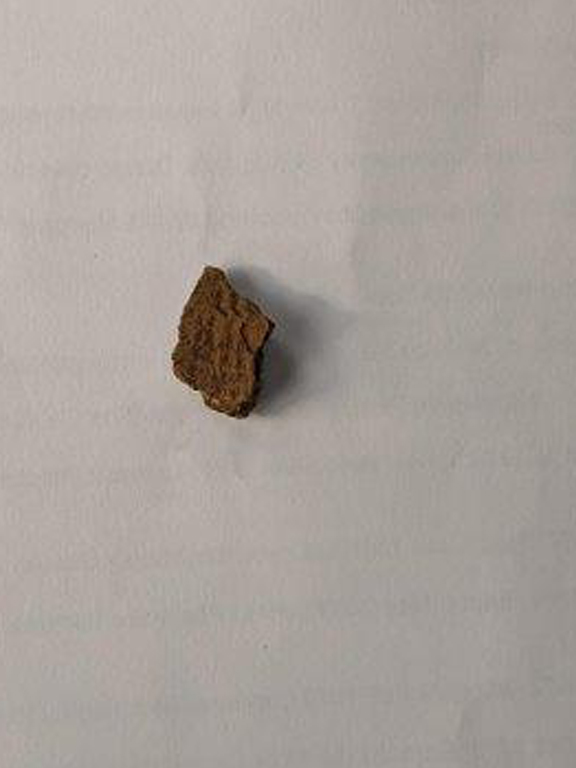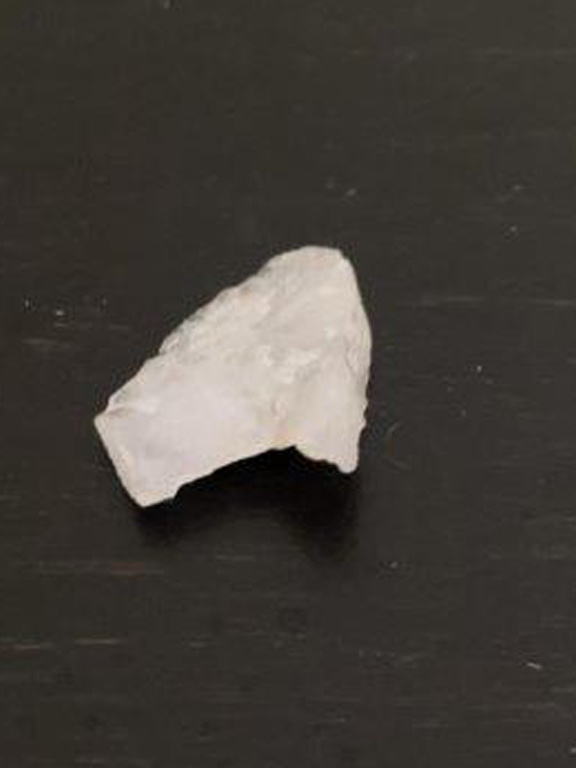Dig uncovers local history
STEPHEN RICCIO
A week-long archeological survey at a Davidson property has confirmed the site’s role as a historic trading site several centuries ago, and it also uncovered artifacts that significantly predate European colonization.
The trading fort that was in the area was rebuilt by British settlers, after taking over from the French, sometime between 1780-1790. Prior to that, there was a post initially built by the French in 1685.
The dig, taking place from Sept. 28-Oct. 2, was made financially possible by Greg Piasetzki, whose ancestor was the clerk in charge of the fort from 1795-1823.

“In 1897, a local priest wrote a history of the whole valley and for Fort Coulonge, he described six buildings,” Piasetzki said. “We wanted to see if we could establish that this fits [where] the description of those six buildings [were]. [A] map was done by a surveyor; we assume he was fairly accurate.”
“When I say we, I’m just the guy who put up the money,” Piasetzki added, laughing.
Many of the buildings that were outlined on the map didn’t perfectly line up with the foundations that have been revealed by the dig, but that may be due to the surveyor outlining where the building structure was as opposed to the foundations themselves.
In addition to locating where centuries-old buildings were, the dig was also an excellent opportunity for the archeology team to study a site that had indicators that it would hold rich history beneath the surface.
“Because it’s a major river and because it’s a sandy site, that’s exactly the kind of site that people would use forever, from day one people look for a sandy spot,” Piasetzki explained. “There’s fewer bugs, less problems, the trees aren’t as heavy, all kinds of reasons you’d like a sandy spot, [it’s] well-drained, all these things make it a desirable site.”
That rich history came in the form of several discoveries: a piece of pottery that archeologists dated at 1,600-2,500 years-old, an arrowhead that is at least 500 years-old and pieces of quartz rock that originate from a Lake Mistassini mine that could be up to 7,000 years-old.
Geneviève Lévesque is the archeologist who found the arrowhead, locating it just beneath the surface in the very first hole dug open, directly next to an old stone foundation.

“The arrowhead was found only four inches down,” Piasetzki said. “It’s because there’s a building that sat on that foundation that had no basement. So they built it on virgin soil and that soil was protected so the arrowhead was only four inches down and yet it’s probably 500 years-old minimum.”
Piasetzki said that the pottery piece was a quick identification for the archeologists, as that style of pottery was uniquely made between 500 BC and 400 AD. There is more immediate mystery surrounding the arrowhead’s age, although it certainly predates European arrival.

As for the quartz that was found, it was chipped out of an ancient Lake Mistassini mine that stands today as a national historic site where Indigenous peoples would collect the rock to use for trade. The quartz pieces were effective devices for making tools, including arrowheads.
“In the southwest of the lake, there [is] a place named Colline-Blanche, White Hill, and it’s a sacred place for the natives,” Lévesque explained.
According to past archeological studies done on the Colline-Blanche site, Indigenous groups have been frequenting the quartz mine for 5,000 years.
Other artifacts dating to the 1800s were found as well, including pieces of ceramic clay pipes, pieces of saw blades and nails.
One of Piasetzki’s hopes going into the dig was that an old building located at the back of the property may have been part of the 1800s fort. However, after conducting several interviews with locals who have knowledge of the area dating back 80-90 years ago, he discovered that the building was transported from Waltham after the fort was abandoned.
Piasetzki said he was incredibly happy to have the help of a University of Montreal radar team for the first two days of the dig, on top of the team of archeologists he hired from the company Ethnoscop.
Their radar services, which otherwise would have cost him $20,000, were offered for free as the team wanted to test out their new machine.
The radar device is pushed like a lawnmower to detect anomalies beneath the surface. Piasetzki said that the radar device would show a bouncing effect whenever it came across an object, although it would not be able to provide its specific identity.
He also thanked Bella and Sandra Boisvert, the two women who own the property. They not only allowed the team to access their land for the dig, but even provided them with coffee and delicious soup.

FREE ACCESS FOR EQUITY SUBSCRIBERS
This article is available free to all subscribers to The Equity. If you are a subscriber, please enter your email address and password below.
SET UP YOUR ONLINE ACCOUNT
If you are a subscriber but have not yet set up your online account, please contact Liz Draper at liz@theequity.ca to do so.
HOW TO BECOME A SUBSCRIBER
To become a subscriber to The Equity, please use our Subscribe page or contact liz@theequity.ca


